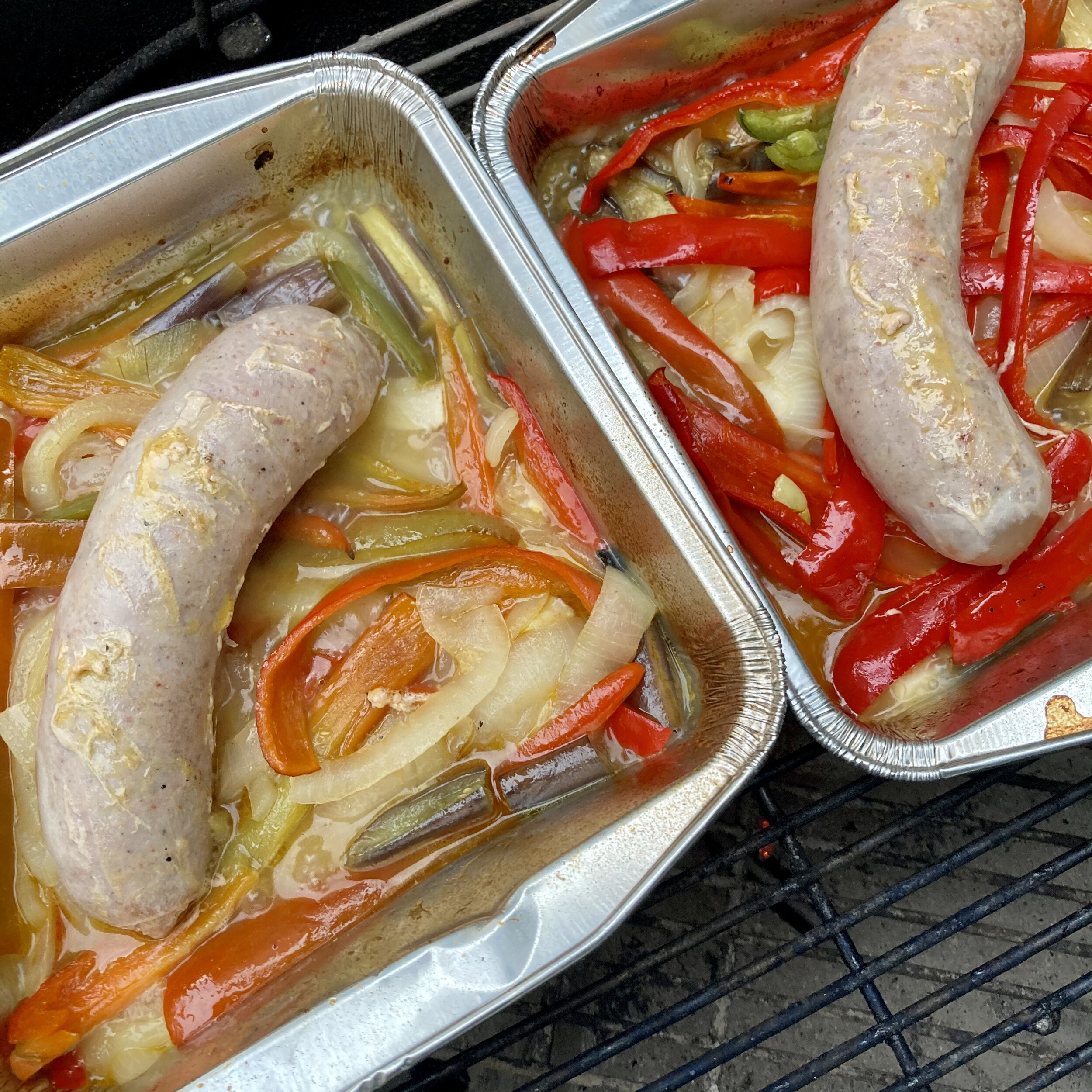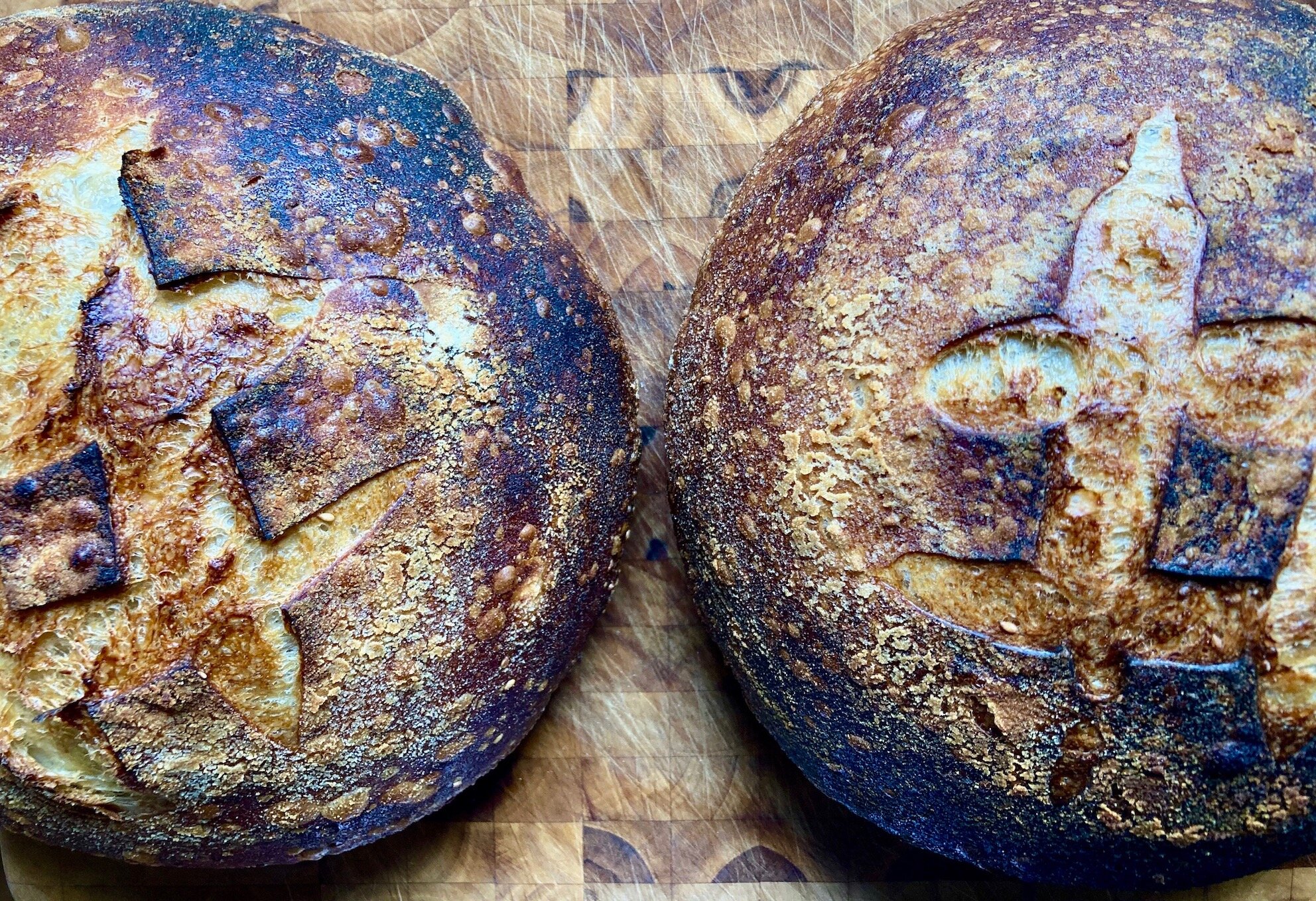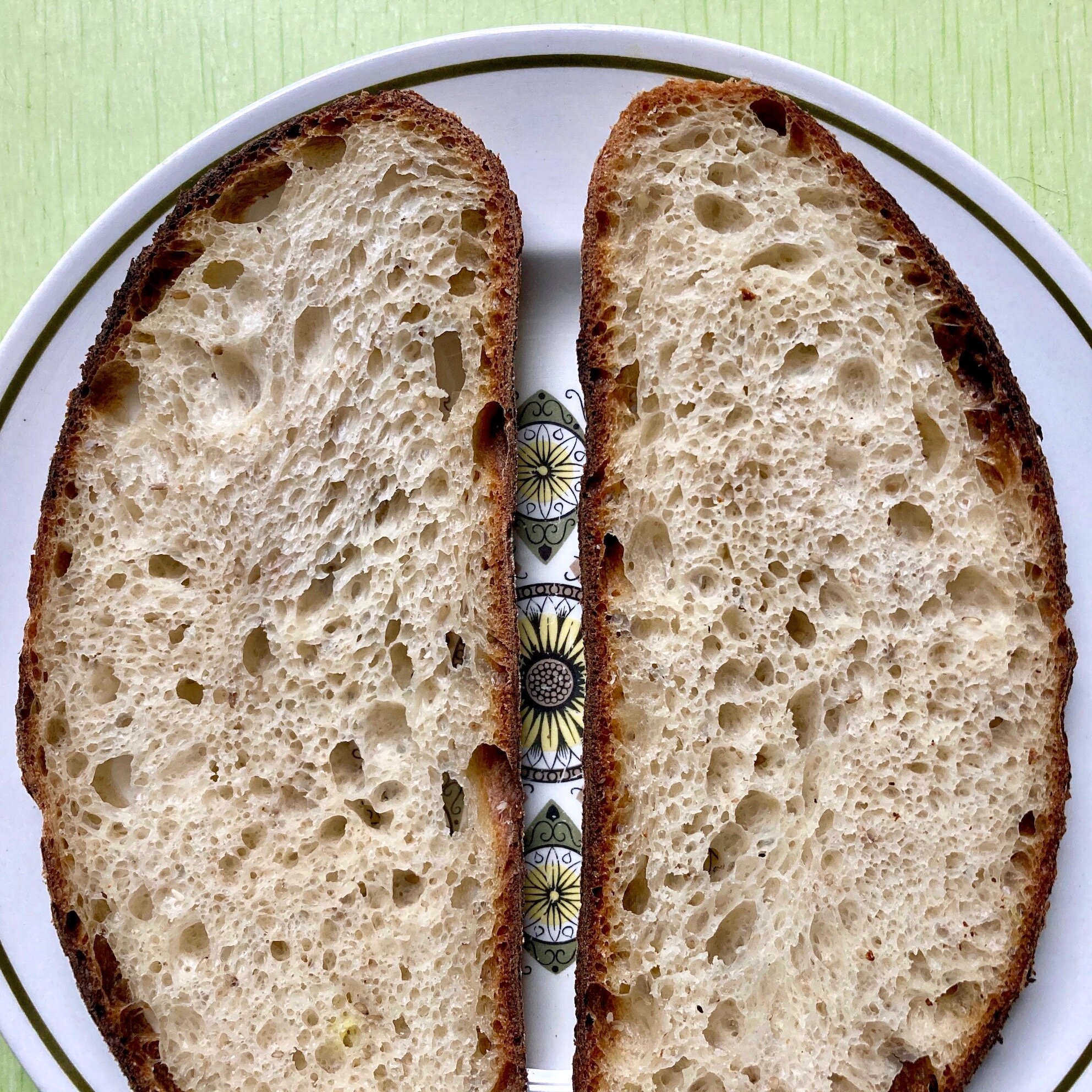Hands up: how many of you out there have encountered difficulties cooking sausages over a charcoal grill?
There’s certainly no need to feel ashamed. It’s a common issue.
Typical problems:
Sometimes your sausages cook too quickly on the outside, but not on the inside.
Other times they burst and spill their precious juices all over your coals, drying up and causing flare-ups.
And then there are times when you leave them sitting on a fire too long and they dry up and get shrivelled and tough.
Luckily, there is a solution, and it’s a pretty foolproof one, too.
A couple of years ago I became a convert to the “Simmered ‘n’ Grilled” sausage method J. Kenji López-Alt developed for Serious Eats. The idea here is to create a moist bed for the sausages that will allow them to cook more gently while imparting them with flavour.
So, if you’re cooking German-style sausages like brats or wieners, you might provide them with a bed of sauerkraut moistened with beer or wine. You place your mixture in disposable—but reusable!—foil pans, you nestle your sausages on top, and you place your pans over the coals in a two-zone barbecue. When the liquid begins to bubble, move the pans over to the cool side of the barbecue. It will likely take about 15-20 minutes for your sausages to cook properly, but that will allow the sausages and the bed of sauerkraut to commingle. Keep your meat thermometer handy. After about 15-20 minutes, check their temperature—you’re looking for an ideal temperature of 150º F.
At that point, your sausages are ready to be moved to the hot side of the grill so you can crisp them up and apply a perfect char to them. This process will be quick—a couple of minutes max—and when you’re done, the sausages will be gorgeous, juicy, and supremely flavourful.
In my case, I was cooking Spicy Italian Sausages with Fennel, so I went the iconic route and accompanied them with onions and sweet peppers. But I also had some gorgeous organic Japanese eggplants, so I quartered them lengthwise, chopped them up, and added them to the trays too. I also added a large clove of garlic to each tray. As for my moistening agent, I added some homemade chicken broth.
Because of the eggplants, I started the trays on the grill without the sausages for about 15-20 minutes to give the veggies a head start. Then I added the sausages and followed the Serious Eats method.
Lo and behold, in about 20 minutes, my sausages had reached temperature and were ready for the finishing touches. So I moved them over the coals, and voilà! After a couple of minutes, they were perfect, so I placed them back in their trays and brought them inside.
These sausages, together with the onions, peppers, and eggplant would be phenomenal stuffed inside an Italian roll. An Italian-American street food classic.
But on this particular occasion I had the idea of tossing them with some pasta and Parmesan cheese and serving it in a bowl with some chili oil drizzled over top. It was exactly what I was looking for.
aj







